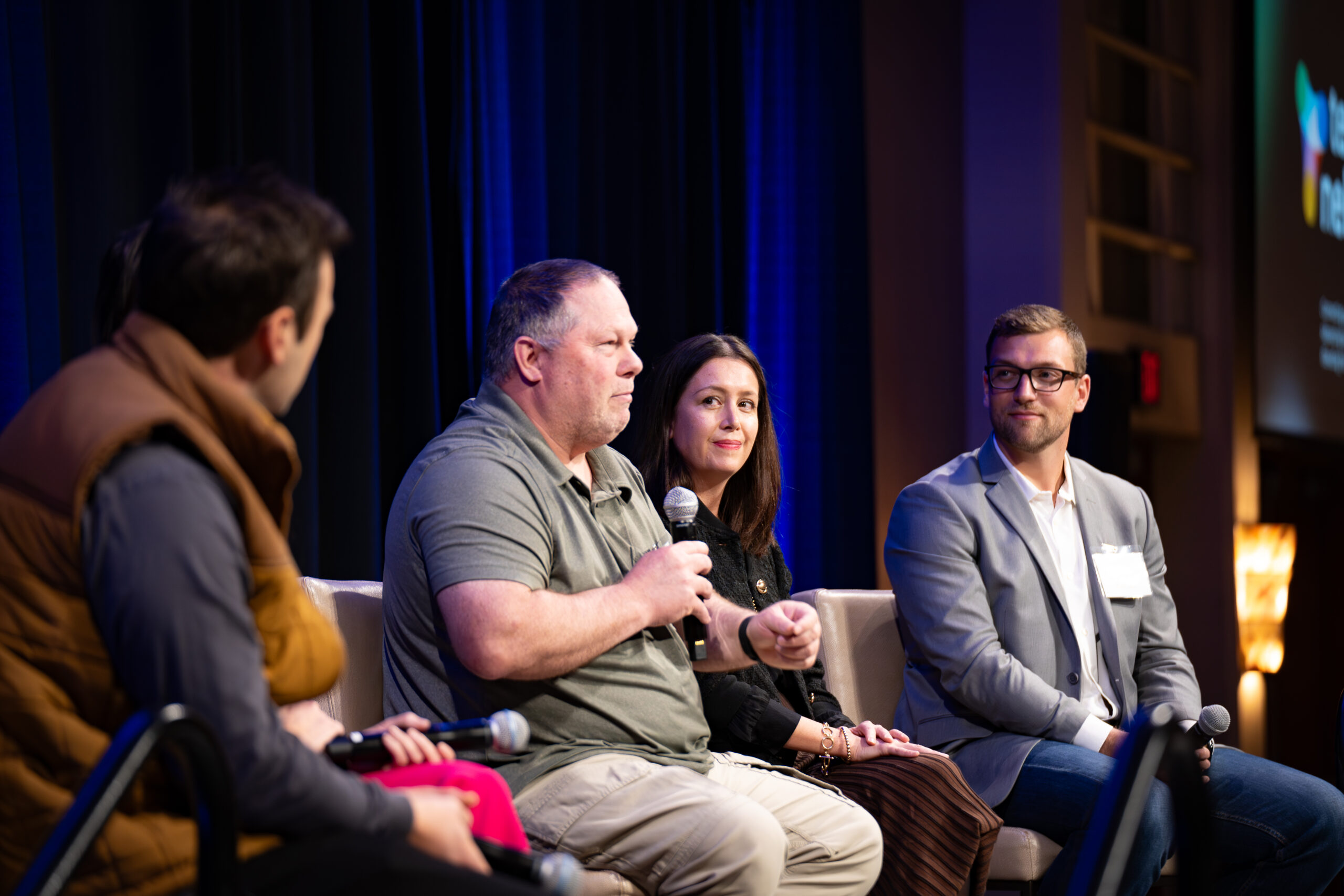 About the Author: Jonathan Kay is the ambassador of buzz at Grasshopper, a virtual phone system that helps entrepreneurs sound more professional and stay connected. Kay created Grasshopper’s word of mouth department and is responsible for generating over 450 mentions in the last 2.5 years. He is also a founder of the Barcamp Tour. You can find him on Twitter, @JonathanCKay.
About the Author: Jonathan Kay is the ambassador of buzz at Grasshopper, a virtual phone system that helps entrepreneurs sound more professional and stay connected. Kay created Grasshopper’s word of mouth department and is responsible for generating over 450 mentions in the last 2.5 years. He is also a founder of the Barcamp Tour. You can find him on Twitter, @JonathanCKay.
Editor’s note: After Kay delivered the talk, “Lessons Learned from FAILING. Losing $500,000,” last month at Barcamp Omaha, we asked him to share that story on Silicon Prairie News. What follows is Kay’s condensed version of the talk, on lessons learned from two Grasshopper missteps. (Photo courtesy of Kay)
Odds are, you have a blog reader. You have all your favorite sites and RSS feeds hooked in, and I would even venture to say you start your day off each morning by skimming through all this content. You probably read a handful of “five tips on …” and “top 10 …” posts, maybe even a few motivating success stories about entrepreneurs who killed it. This will be like none of those. This post will outline a handful of lessons you can learn from two big ass failures.
Get ready. Get excited. Here we go.
The Failures
I want to very briefly outline the two failures below so that you understand the experiences we are pulling from. Please also note these companies were created by our team here at Grasshopper, when we thought spinning off other ideas was a valuable business model. We have since realized that is not the case and are focusing solely on our Virtual Phone System.
Chargify Pricing
In October 2010, we changed our pricing a bit. We went from allowing you to bill 50 customers for free to having no plan where you can bill customers for free. We also raised entry-level price points. You can see the old (top) and new (bottom) pricing below.

Chargify’s original pricing plan. Screenshot courtesy of Kay.

Chargify’s new pricing plan. Screenshot courtesy of Kay.
We did such a poor job communicating this important change to our customers that we started a bit of an uproar. In one (horrible) day we reached the top of HackerNews TWICE (no easy feat), both for negative reasons. On top of that, there were a combined 200 negative comments.
Inc.com immediately published an article, “When Customers Revolt,” followed by TechCrunch’s “Subscription Billing System Chargify Missteps as it Switches from Freemium to Premium.” That does not even include the hundreds of tweets, Facebook posts, emails and messages on every other platform conceivable we received. Needless to say it was a disaster.
Spreadable (doors closed)
In May 2010, we created a new company called Spreadable, which was a word of mouth tool that helped empower your happy users to send referrals. Spreadable was making money, growing every day, and got significant coverage in the press. Yet after one year we shut the product down, eating a $500,000 loss.
Lessons Learned
Communication and perception matter (Chargify)
When it comes to sensitive matters like this, we learned that intentions do not matter as much as perceptions. Our intentions were very simply to make the product better for those paying to use it and utilizing it for real businesses. However, this never came across, as people’s perception was that this was strictly a monetary decision, we were greedy and we had planned this since day one.
“We learned that intentions do not matter as much as perceptions.”
This could have been solved with much earlier and more transparent communication on our end. We learned that not communicating is the easiest way to break your customers’ trust. If you think about the types of emails people hate getting, it is boring newsletters, feature upsells, partner offers, blog posts, etc. Nobody gets upset when you email them about something that will directly affect them. So whenever dealing with a subject as sensitive as pricing, you should communicate as often as you can. Make sure you are treating your customers like stakeholders in your company. They deserve it.
What works for you won’t always work for them (Spreadable)
 We very much built Spreadable based on something we created for ourselves at Grasshopper that was very successful (our Refer an Entrepreneur Program – just look at the top of any page of our website). Our Refer an Entrepreneur program generated $100,000 of increased revenue (all traceable back to the app)! We also found that visitors who came in via this referral were converting at 22 percent, and at a 75 per lower cost per acquisition than other marketing channels. So when we started building, we didn’t talk to a lot of people, we didn’t ask what they thought or do any of the recommended customer development activities. As far as we were concerned, we already had the winning blueprint. (Above: Grasshopper’s Refer an Entrepreneur form. Screenshot from grasshopper.com.)
We very much built Spreadable based on something we created for ourselves at Grasshopper that was very successful (our Refer an Entrepreneur Program – just look at the top of any page of our website). Our Refer an Entrepreneur program generated $100,000 of increased revenue (all traceable back to the app)! We also found that visitors who came in via this referral were converting at 22 percent, and at a 75 per lower cost per acquisition than other marketing channels. So when we started building, we didn’t talk to a lot of people, we didn’t ask what they thought or do any of the recommended customer development activities. As far as we were concerned, we already had the winning blueprint. (Above: Grasshopper’s Refer an Entrepreneur form. Screenshot from grasshopper.com.)
“Make sure you are treating your customers like stakeholders in your company. They deserve it.”
The issue here was that we ended up building something that didn’t really solve the problem. The first thing we learned (once we started talking to people) was that people really wanted the ability to reward their brand loyalists who were making referrals, something we did not build into v1. We also learned that this sort of word of mouth program worked best with a specific type of company, which Grasshopper happened to be. Referrals are easiest to influence for a product that has a relatively low price point and a website that gets high traffic. Had we simply taken the time to ask people “Why does this suck?” we would have learned a lot and saved ourselves a ton of time (and money).
Marketing Launch ≠ Product Launch (Spreadable)
To close, I want to simply list the slew of mistakes we made, in hopes you can avoid them:
- We got a ton of press early on, before the product was ready to scale. We ended up with a very large beta list, but an app too unstable to let everyone in.
- We threw our “marketing launch party” before we identified our “product/market fit,” so we did not even know the people we invited were 100 percent the end users/ decision makers of our product.
- When we threw our marketing launch party, we were not even able to accept credit cards, so we missed out on an opportunity to acquire paying customers (this one is probably the most embarrassing).
- As a result of the marketing launch, we created artificial deadlines (and hence pressure) for our developers when really we could have just shown screen shots, wire frames, or mock ups.
Your early team is very important (Spreadable)
I want to start off by simply pointing out a misconception I think a lot of people have: “More developers on a product is good!” I challenge that and say that “More developers can actually just lead you down the wrong path quicker.”
When you are in the early stages of creating something, you have one goal: “Make a hypothesis, go talk to a ton of people, prove or disprove that hypothesis – and then do it again.” You need to keep doing this over and over again until you have identified a market that has your problem, is willing to pay for a solutions and has verbalized that what you are building will solve this problem for them. In order to do this, all you need is one good product person and one good technical person.
Before you have that product/market fit and an audience that is willing to pay, having a bigger team will simply consume resources faster, add more pressure and make communication even harder.
(Note: Chargify is still in business and doing quite well. Spreadable no longer exists.)



